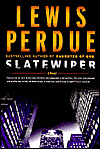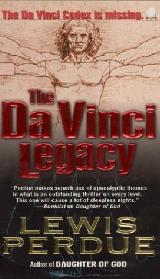House of Mondavi: Book Review

My original draft appears below. The edited review appeared in Barrons on Sept. 3, 2007.
NOT LONG AFTER the Robert Mondavi Winery went public in 1993, I found myself at a winery luncheon seated next to Bob and a few seats away from his wife, Margrit Biever. Salted among his usual ebulent pronouncements about food and wine were doubts about the wisdom of having gone public.
In my capacity then as founder and publisher of Wine Business Publications, the largest circulation wine trade magazine in North America, I had numerous occasions over the next four years to meet, talk and dine with Bob, his wife, his sons Michael and Tim as well as daughter Marcia, the Baroness Philippina de Rothschild and most of the winery's executives, board members and advisors.
During that time, Bob's upbeat personality darkened whenever matters touched on the wisdom of going public. In his 1998 biography, Harvests of Joy, he bemoaned the corporation's plummeting stock price and wrote: "We had taken an enormous gamble, one of the biggest of my life, and now it appeared to have blown up in my face. And worse was yet to come."
Just how much worse is described in excruciatingly immaculate but highly readable detail by Julia Flynn Siler in The House of Mondavi: The Rise and Fall of an American Wine Dynasty, (Hardcover, $28, 452 pages, June 2007, Gotham Books, New York, ISBN: 978-1-592-40259-5).
This is not light summer reading by any means. Based on exhaustive research and interviews, each page is packed with facts and footnotes which, by dint of superb writing, manages to engage the reader and avoid the data brain-lock which would have plagued a less-talented journalist.
To wine country insiders, House of Mondavi offers no new shocking surprises: family feuding, jealousies, infidelities, eccentricities, extravagancies and excess have long been known and acknowledged along with the brilliance, drive and perseverance that made the Robert Mondavi Winery an icon to wine lovers and the broad shoulders on which Napa Valley wine stood.
What Siler has provided is well-documented structure, context and detail behind the gossip and the harsh family cruelties which eventually ran the winery aground and its quality into the ground.
After the obligatory recitation of ancestry, immigration from Italy and the too-oft-related fisticuffs between Robert and his brother, Siler digs into the multifacted perfect storm that wrested control from the family and into the hands of Constellation Brands, the world's largest wine company.
Siler makes it clear that some of the Mondavi's problems were not entirely of their own making, most notably the Phylloxera grape-vine epidemic of the 1990s as and the current wine glut. Phylloxera is a long-known pest which destroys grapevine roots and nearly wiped out wine production in America and France around the turn of the century. Various resistent rootstocks have since been developed, one of which -- AxR1 -- was heavily promoted to the industry by scientists at the University of California, Davis.
Despite the fact that significant evidence existed about AxR1's vulnerabilities, it was planted in nearly every vineyard in California. Then, beginning in the 1980s, the pest feasted on AxR1 presenting California vintners, including Mondavi, with the a multi-billion-dollar for the massive meal.
Vines had to be ripped out and replanted, creating shortages of wine in the early to mid 1990s. Urged on by easy financing, rosy projections for wine consumption growth and brokerage analysts eager to maintain a suitable environment for public winery offerings, vineyards were planted, over-planted and over-planted again.
By mid-1995, Wine Business Monthly presented data that showed a glut beginning around 2000 and that wine prices -- and winery margins -- would suffer from the oversupply. Barron's expanded upon this with major news reporting in 1998.
House of Mondavi makes it clear that even as winery CEOs like Beringer's Walt Klenz and analysts for Goldman Sachs, Hambrecht & Quist and Nationsbank were touting "what glut?" the industry's shrewd operators who had no vested interest in maintaining public winery stock prices, were making their plans. Key among these was Fred Franzia, bulk-wine magnate, industry bad-boy and superbly innovative marketer.
Best known for his wines in a box, Franzia saw the glut building and as early as 2001 was buying glutted inventory from Beringer, Mondavi and others. One of Franzia's best known glut-baby successes was the now reknowned. "Two Buck Chuck."
But most other California wineries survived the same bad advice from analysts, financiers, IPO hustlers and other experts who knew better. Siler offers chapter after chapter describing what made the stormy seas fatal to the Mondavis.
To the delight of Napa Valley's eternally jealous schadenfreude addicts, House of Mondavi makes it clear that the men of Mondavi destroyed the empire with their devil's brew of arrogance, indulgence but primarily their pathological inability to put aside personal differences for the greater good of the enterprise.
Those interested in the intimate details of the Mondavi men's flaws will find them all here: Robert's driven perfectionism and infidelity; Michael's temper and arrogance, Tim's infidelities and the failure of professional managers, exceutives, psychologists to help any of the men recognize a greater good outside themselves.
I say, "men" here because Robert's daughter Marcia plays only bit roles in the book, reflecting her real-life involvement with an empire started and dominated by men playing out the masculine roles of traditionally Italian men.
In the end, House of Mondavi describes a man brought down by his own generosity. While the winery's 1993 public offering was seen as a way to pass the company on to the next generation and allow Robert to take some of his wealth from the company he had founded, it only accentuated the tensions among the founder and his sons and amplified their interpersonal flaws.
Siler offers a blow-by-blow account of how Robert and his sons were gradually eased out of the company, albeit with tens of millions of dollars in personal wealth. That might have been the whole picture but for Robert's generosity. Among his many charitable efforts, Robert had pledged more than $35 million to the University of California, Davis and another $10 million to Copia, a Napa wine and food center. All of the pledges were backed by his stock. Siler notes that when Mondavi stock dropped below $20 a share in 2003, Robert was essentially insolvent.
True to his generosity, Robert was unwilling to renege on his charitable obligations and thus ignited the final days of a Mondavi at the Robert Mondavi Winery. When Constellation Brands came knocking, Robert and his child eventually converted all of their Series B stock (which had been their anti-take-over protection) and sold it to Constellation.
According to Siler, Marcia received $107 million; Michael about $100 million; Tim, a little less than $59 million and Robert, about $70 million.
Worse had certainly come to worst for Robert. Siler describes the post-sale Robert as having suddenly aged, going from vigorous and far younger than his years to a shaky, wheel-chair-ridden man with hearing and memory problems more typical of people in their early nineties.
The final stories are yet to be written for Michael, Tim and Marcia, all of whom have started wine enterprises of their own. Only the coming years will tell whether they have enough of the right stuff they inherited from their father.



0 Comments:
Post a Comment
<< Home